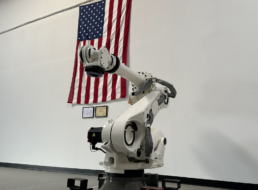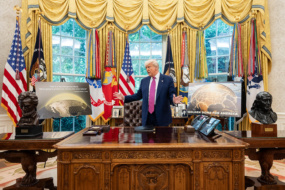The Space Force chief said Wednesday that he’s “very hopeful” the Space Force will be spared from the budget cuts called for by the Trump administration.
Defense Secretary Pete Hegseth has directed the military to trim 8% of its budget each year for the next five years. But Chief of Space Operations Gen. Chance Saltzman said those cuts are intended to go into a pot of money that could be invested in higher-priority missions—including space.
“I’m very hopeful that the case the Space Force makes means a lot of that money will come back into our budget,” he said, adding that the Trump administration’s “Golden Dome” missile defense proposal could actually lead to national security space programs getting more resources. “I think we’re in a good position.”
More optimism: Hegseth made comments last week suggesting Saltzman has reason for his optimism.
“There’s no way to ignore the fact that the next and most important domain of warfare will be the space domain,” he said. “You’re going to see far more investment from this administration into that domain, both offensively and defensively.”
Proposed cuts: Still, Saltzman has had to provide a plan for what could be cut from the service. Rather than proposing to trim a small amount from everywhere—Saltzman said budgets have shrunk so much that even minor cuts impact readiness—the Space Force evaluated each program and made “vertical” slices to eliminate missions where the service is prepared to accept more risk and maintain full funding to critical areas where less risk can be taken.
Clear the air: Saltzman also addressed a conflict between the Space Force and the Mitchell Institute in February. Saltzman banned Guardians from participating in events hosted by the think tank after it released a report criticizing the chief for not focusing enough on offensive capabilities in orbit.
Saltzman said that he is a fan of “constructive debates,” but had concerns about the tone and timing of the report that had been addressed. “As far as I’m concerned, that’s water under the bridge now,” he said.




